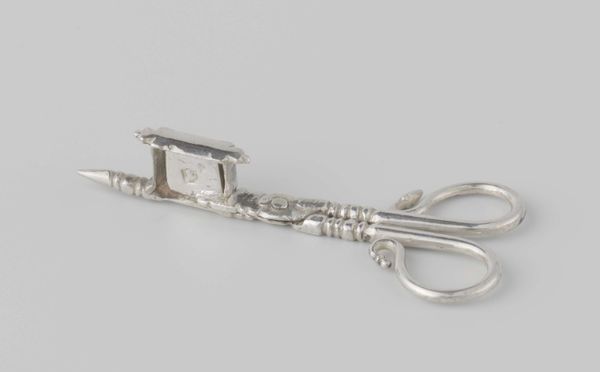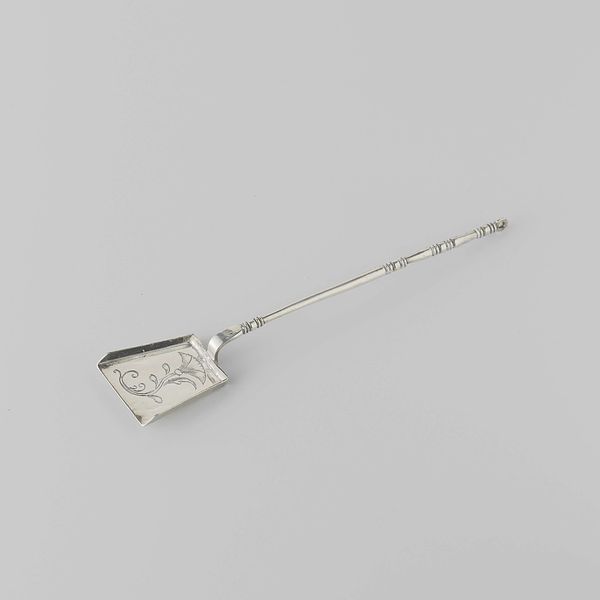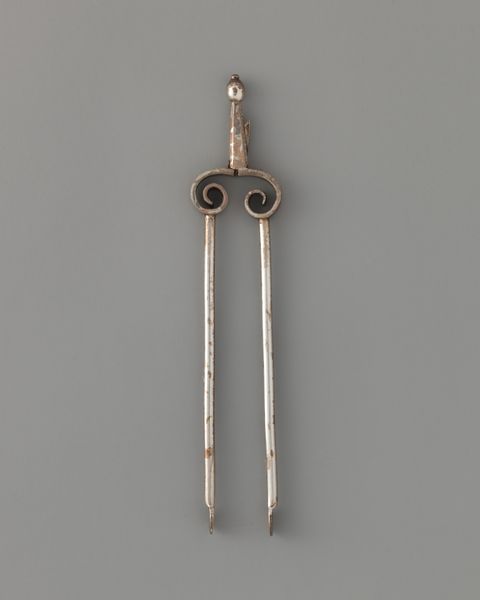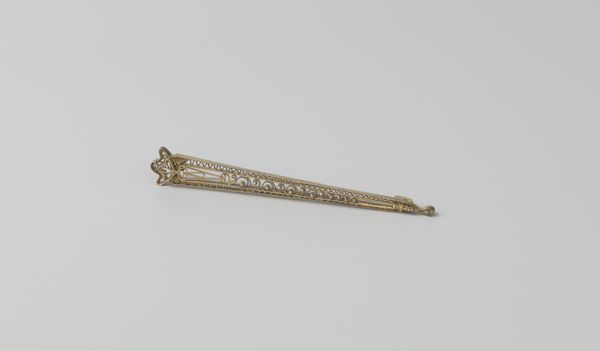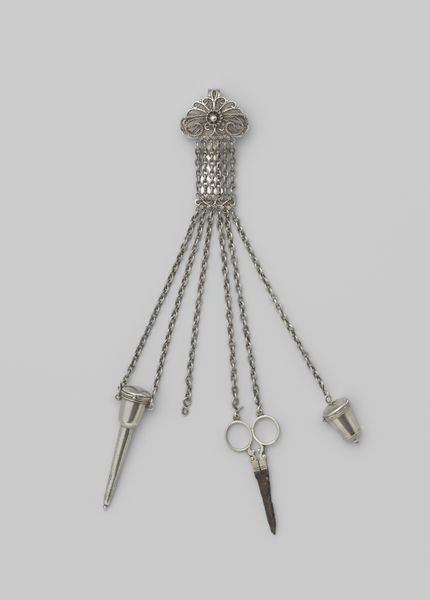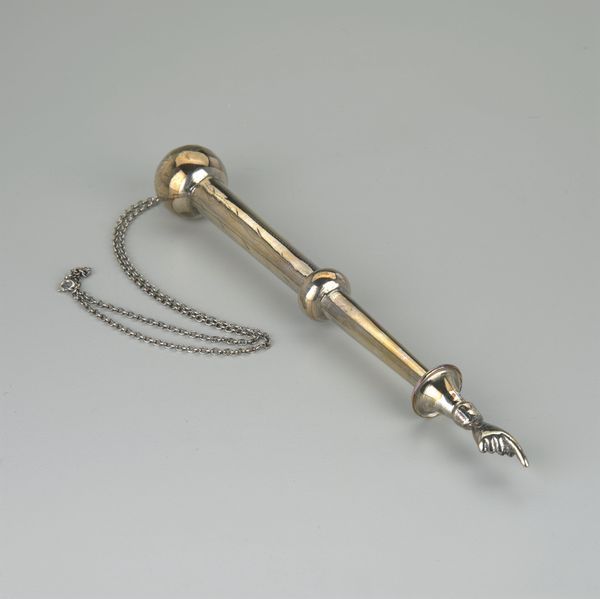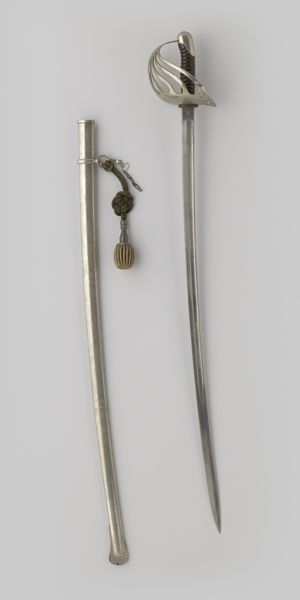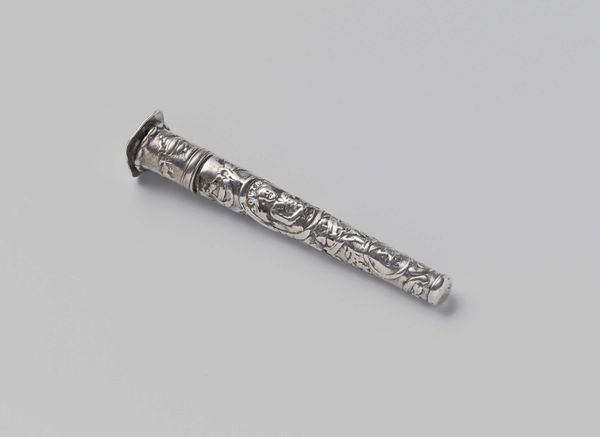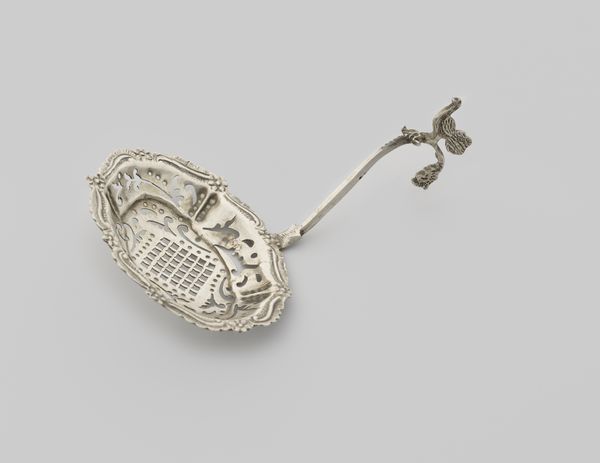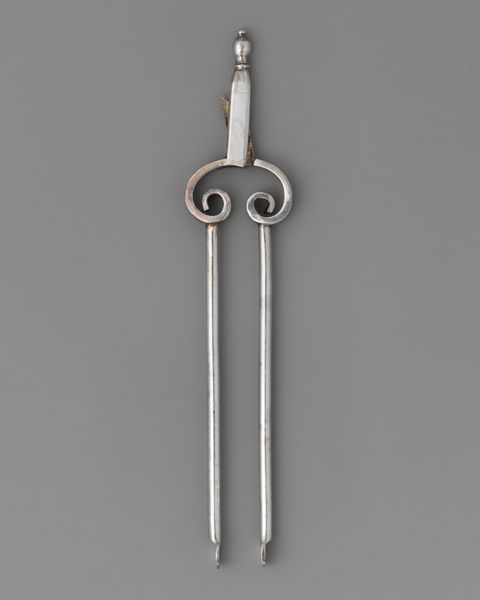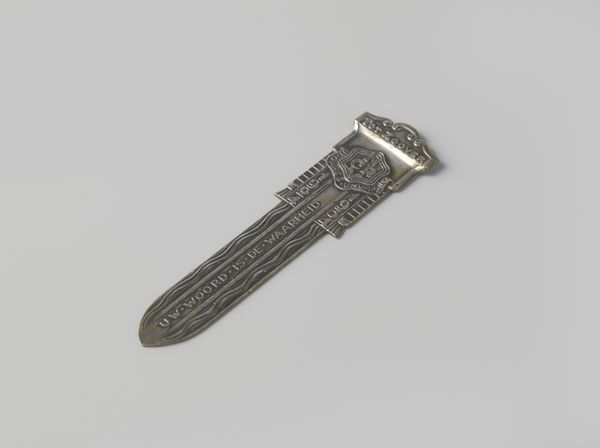
metal, sculpture
#
baroque
#
metal
#
sculpture
#
decorative-art
Dimensions: length 5.0 cm, width 2.3 cm
Copyright: Rijks Museum: Open Domain
Editor: This ornate metal object, "Kaarsensnuiter," from around 1675, is described as a candle snuffer. I’m struck by how functional it is, yet the artisan took so much time and care crafting it with all those baroque details. What can you tell me about it? Curator: The “Kaarsensnuiter” gives us a unique opportunity to reflect on 17th-century production. These were luxury items; think about the labour involved in extracting and working the metal, forming such a complex object, then the context: burning candles requires wax, wicks, a holder, striking a flame – an entire economy of expendable material, really. Editor: An entire economy centered on something so simple as light! Curator: Precisely. And it points to the socio-economic disparities of the period. This wasn’t about mere functionality. The baroque embellishments added value to a mass produced utility. This “decorative art,” was an expression of status – what resources did you have to waste, effectively? Editor: So, you're suggesting this isn't just about its use but about displaying wealth and access to resources? Is that reading too much into it? Curator: Not at all! The craftsmanship becomes another raw material being manipulated and marketed here. This snuffer also demonstrates that art isn't separate from craft or function, but intricately connected to daily life and societal structures. Do you find yourself questioning traditional distinctions between fine and decorative arts after looking at this piece? Editor: Absolutely! Before this, I would have probably dismissed the snuffer as merely ornamental. Curator: Exactly, seeing art and everyday life as completely enmeshed is often overlooked.
Comments
No comments
Be the first to comment and join the conversation on the ultimate creative platform.

